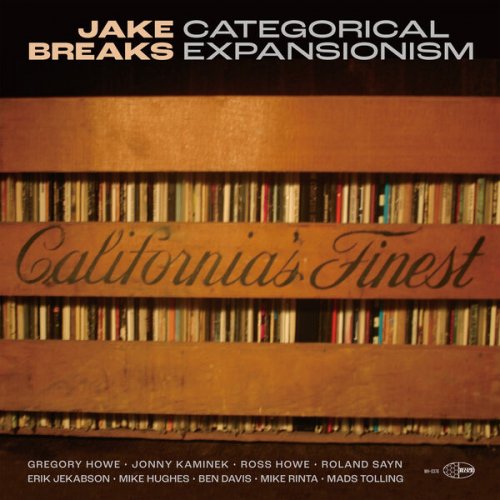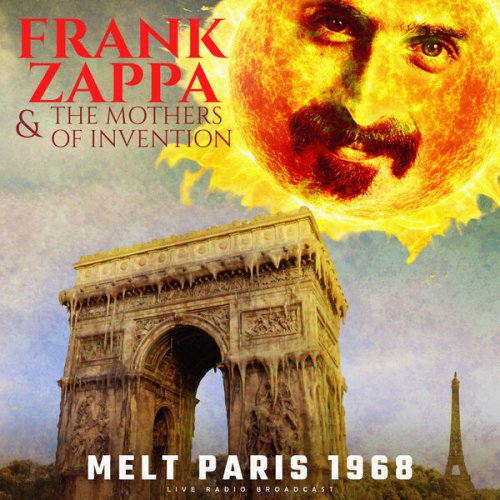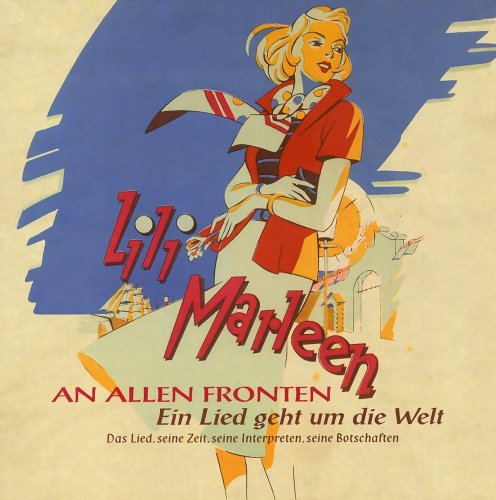Enrico Sorbello - OSTINATO! Alla bastarda, Chaconnes, Passacaglias, and Other Ground-Bass Works (2025)
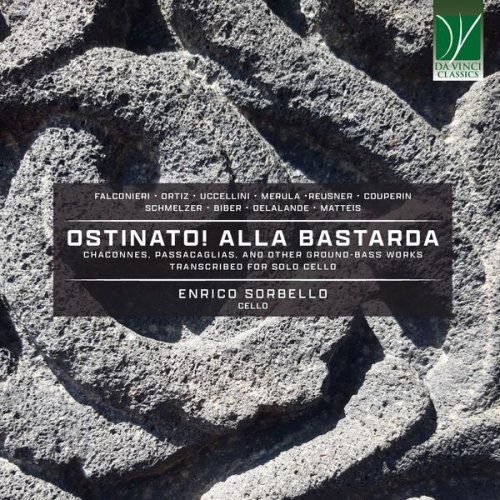
Artist: Enrico Sorbello
Title: OSTINATO! Alla bastarda, Chaconnes, Passacaglias, and Other Ground-Bass Works
Year Of Release: 2025
Label: Da Vinci Classics
Genre: Classical Cello
Quality: flac lossless (tracks)
Total Time: 01:12:41
Total Size: 279 mb
WebSite: Album Preview
TracklistTitle: OSTINATO! Alla bastarda, Chaconnes, Passacaglias, and Other Ground-Bass Works
Year Of Release: 2025
Label: Da Vinci Classics
Genre: Classical Cello
Quality: flac lossless (tracks)
Total Time: 01:12:41
Total Size: 279 mb
WebSite: Album Preview
01. Ciaccona
02. Ricercata prima
03. Aria sopra la Bergamasca
04. Ciaccona
05. Una ciaccona
06. Passacaglia
07. Les Barricades mystérieuses in B-Flat Major
08. Ciaccona
09. Recercada Segunda sobre tenores Italianos in G Minor
10. An Italian Ground
11. Passacalle
12. Passacaglia
13. Chaconne
14. Diverse bizzarrie sopra la Ciaccona
15. Montanara di Carpino
The album’s program revolves around two interwoven musical practices that blossomed in early modern Europe: the basso ostinato and the viola bastarda. These concepts, nurtured across Italian, French, German, and Spanish traditions, illuminate how Renaissance and Baroque musicians balanced fixed structures with improvisatory freedom. A basso ostinato (Italian for “obstinate bass”) is a recurring bass line or harmonic pattern that obstinately repeats, providing a foundation over which variation and invention unfold. This device has roots deep in European music history – medieval examples can be found – but it flourished spectacularly in the 16th and 17th centuries as composers and performers from Naples to Paris embraced its potential. Instrumentalists of the late Renaissance delighted in spinning melodic variations above unchanging bass patterns, treating these repeating harmonies as a canvas for virtuosity and fancy. In Italy, such ground-bass dances as the passamezzo and romanesca became well-known frameworks for improvisation, their names traveling on manuscripts and tongues across the continent. Spain contributed its own exuberant patterns – for instance, the wild Folía (of Iberian origin) – and Spanish vihuela and guitar players cultivated the art of diferencias (variations) over ostinato basses. By the early Baroque, France had adopted the ostinato principle in the form of the chaconne and passacaille, which in the court of Louis XIV often served as grand dance finales in operas and ballets. The German lands, too, absorbed these influences: from ground-bass hymns in Lutheran settings to magnificent ostinato-driven works by Buxtehude and Pachelbel, culminating in J.S. Bach’s towering passacaglia and famous Ciaccona, which brought the genre to new heights of complexity and expressive depth. Across these regions, the basso ostinato fostered a distinctly harmonic mode of thinking – a cyclical underpinning that invited ever-new melodies and variations while the bass stubbornly repeated, thus marrying compositional structure with the spirit of improvisation.
Parallel to the bass-driven impulse of the ostinato, the viola bastarda tradition exemplifies the era’s inventive fusion of composition, transcription, and virtuosity. The term viola bastarda refers both to a type of bass viol and to a daring style of playing that was celebrated as a crowning achievement of musical Mannerism. Originating in late 16th-century Italy, this practice allowed a single bowed instrument to embody the essence of a complex polyphonic work. To play alla bastarda meant to take a choral madrigal or motet and transform it into a single, sweeping melodic line that traversed the full range of the viol, from its deepest tones to its highest register. The viola bastarda player became a one-person ensemble, deftly weaving together the original multiple voices by means of agile leaps, rapid diminutions, and elaborate ornamentation. This was virtuoso improvisation in the noblest sense: although written examples exist, contemporary accounts suggest that much of the bastarda style was extemporized, relying on the player’s ingenuity and deep harmonic understanding rather than any fully notated score. Such performances demanded a keen grasp of the underlying harmonic architecture of the piece, since the soloist had to imply or outline the chords and counterpoint while freely embellishing the melody. In effect, the viola bastarda art was a form of creative transcription – reimagining vocal polyphony for a solo instrument – and a display of idiomatic prowess, pushing the viol (and by extension, its cousin the cello) to expressive limits previously reserved for the human voice.
Taken together, the basso ostinato and viola bastarda represent a fascinating duality in European music history: one, a compositional ground that anchors flights of invention, and the other, a performative tour de force that liberates a single instrument to encompass an entire polyphonic texture. Both grew from the fertile interplay of improvisation and structure that characterized the late Renaissance’s shift into Baroque sensibilities. Both also transcended local origins to become pan-European phenomena: Italian musicians might improvise over a ruggiero ground that a German or English composer could also adopt, just as the Italian bastarda style inspired awe beyond Italy’s borders. In the program that follows, which spans Italian, French, Spanish, and German works, these historical practices are more than abstract concepts; they inform the very fabric of the music’s style and interpretation. This introductory essay thus offers a context for the listener, highlighting how obstinate basses and a bastard viol’s liberty of invention each contributed to a new musical aesthetic. It was an aesthetic in which repetition became a source of creativity, and meticulous craftsmanship went hand in hand with improvisational daring – a perfect backdrop for a solo cello journey into the heart of Baroque imagination.
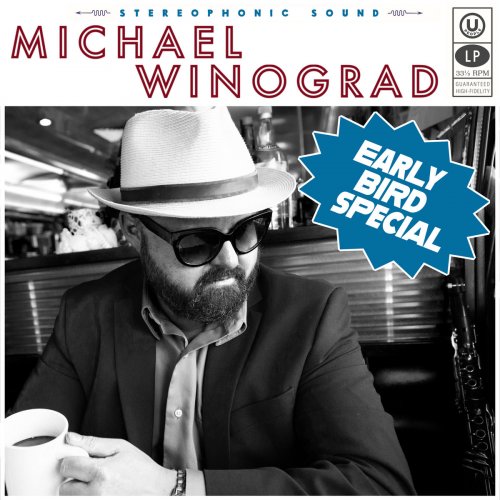

![Christian Escoudé, Aldo Romano - Return (Remastered 2024) (2024) [Hi-Res] Christian Escoudé, Aldo Romano - Return (Remastered 2024) (2024) [Hi-Res]](https://www.dibpic.com/uploads/posts/2025-12/1766398924_nbinjdpzhg4qc_600.jpg)
![Rainer Brüninghaus, Kenny Wheeler, Jon Christensen & Brynjar Hoff - Freigeweht (1981/2025) [Hi-Res] Rainer Brüninghaus, Kenny Wheeler, Jon Christensen & Brynjar Hoff - Freigeweht (1981/2025) [Hi-Res]](https://www.dibpic.com/uploads/posts/2025-12/1766402111_cover.jpg)
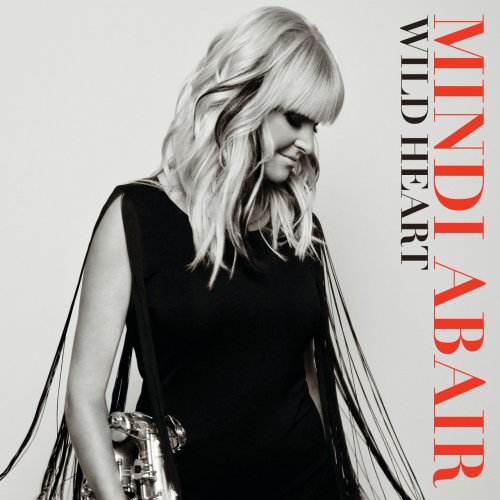
![Fabio Fabor - Orfeo in Paradiso (2025) [Hi-Res] Fabio Fabor - Orfeo in Paradiso (2025) [Hi-Res]](https://img.israbox.com/img/2025-12/25/q71ujyj7y05hb70sb98yrxcyd.jpg)
